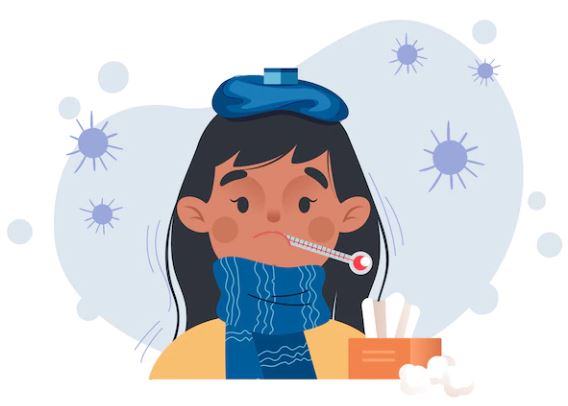Omega-acids and autoimmune diseases
Imagine that your body is a fortified castle and that your immune system is your army fighting invaders from microbes to prevent them from entering the castle or climbing its high walls.
In this case, the castle will be wrecked by its walls and house. This is exactly what happens when you get a disease ( Systemic lupus erythematosus) and ( Multiple sclerosis)....Of course you will suffer from pain, fatigue, dizziness, rash, depression and many other symptoms.
The main goal of your immune system is to protect your body from bacteria, parasites, viruses and cancer cells to keep a fortified castle, but sometimes under incomprehensible conditions it accidentally attacks your body rather than protecting it. This is called autoimmune disease. There are more than 100 known autoimmune diseases.
Unfortunately, it is not precisely clear why the immune system is doing this heinous act, which it likens to treason , Why do immune cells turn on you instead of defending you? , Is it wrong in immune cells or in cells that have been attacked rather than defended? .
The real reasons scientists are still looking for. But it turns out that there are some factors that may increase the chances of autoimmune diseases
Of course autoimmune diseases affect many types of tissue and almost any organ in your body causing a variety of symptoms including pain, fatigue, rash, nausea, headaches, dizziness and more. The specific symptoms depend on the exact disease.
Many autoimmune diseases are more prevalent in women than in men. Diseases are common in the United States, for example, 78% of autoimmune patients were found to be women. There are 1 in 15 people with autoimmune diseases.
Treatment for the same reasons has not yet been detected and the disease has been finally eliminated. But through our reading of many research studies have confirmed that eating unsaturated omega-3 fatty acids is a significant sensation in the symptoms of autoimmune diseases such as red lupus and rheumatoid.
A study confirmed that pSS patients had deficient omega intake. Lower ocular symptoms, ESSDAI scores and salivary CCL2 correlated with higher ω-3 levels, possible suggesting a role in chronic inflamma tion. Further studies are warranted to deepen the knowledge of this association. (Omega-3 and omega-6 fatty acids in primary Sjögren’s syndrome: clinical meaning and association with inflammation .
According to the Academy of Nutrition and Dietetics of America, women and men between the ages of 19 and 50 require approximately 12 g and 17 g per day of unsaturated fatty acids. But research also suggests that high omega-6 to omega-3 intake contributes to the occurrence of infections and chronic diseases. To ensure an appropriate ratio between them, it is necessary to eat omega-6 rich foods in moderation while eating a good amount of omega-3 acids found in foods such as fatty fish, nuts and seeds.
The most important fatty acids found in food
On a molecular level, fatty acids are long chains of carbon atoms with some hydrogen atoms attached. Small differences in structure make a big difference in how fatty acids behave. There are four types of fatty acids:
Saturated: The carbon chains of saturated fats have no open spots on their chain for hydrogen atoms. That is why they are called saturated. They raise LDL cholesterol (the "bad" cholesterol) and increase the risk of heart disease
Monounsaturated: These fatty acids are missing one of their hydrogen atoms due to one double bond between carbon molecules. Sometimes called MUFAs, monounsaturated fats are healthier than saturated fats.
Polyunsaturated: These fatty acids are missing more than one of their hydrogen atoms. Sometimes called PUFAs, these fatty acids have significant health benefits. Omega-3 and omega-6 fatty acids belong to this group.
Most foods contain a mixture of fats. Even foods that contain healthy fatty acids may contain some saturated fats. Read labels and choose foods with the best ratio of healthy fats and unhealthy fats.
It's also important to remember that all fats are high in calories and should be used sparingly. Otherwise, they may lead to obesity and the associated health challenges.
You have to maintain the omega-3 to omega-6 acid intake ratio to be always in favour of omega-3 but keep the ratio from 2 to 1. Or at least 1:1 to avoid autoimmune diseases. Do not forget to eat fish once a week and do not overuse common "redness and fry oils" to protect yourself from autoimmune diseases
If you are wondering whether you get enough “good” fatty acids in your diet, the answer is not simple. The U.S. Dietary Guidelines contain no guidelines for most fatty acids. There is a recommendation for linolenic acid (an omega-3) and for linoleic acid (an omega-6) for children and young adults. For most people, the goal should be a well-balanced diet in which healthy fatty acids have taken the place of most saturated fats.
Foods With Fatty Acids
Walnuts:Walnuts pack a double punch, as they contain both omega-3s and omega-6s. One ounce of walnuts contains about 2.5g of ALA, which is about twice the average recommended daily intake. Still, you should consume walnuts in moderation as they contain about 185 calories per ounce (about seven nuts).
Avocados :Avocados are a good source of monounsaturated oils, and they contain a wide spectrum of other nutrients as well. They are a high-calorie food, with just half an avocado containing about 161 calories.




